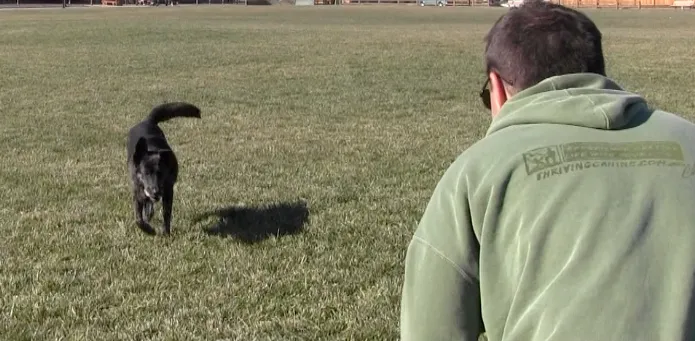Dreaming of the day your canine companion walks gracefully by your side, without the restraint of a leash? Achieving a reliable off-leash heel is a pinnacle of dog training, demanding dedication, consistency, and a structured approach. It’s about building an unbreakable bond and trust, ensuring your dog’s safety and your peace of mind in various environments. Mastering this command means your dog understands to stay close to you, matching your pace and direction, even amidst distractions. This advanced skill requires solid foundational obedience and a gradual progression, transforming your dog into a truly reliable off-leash partner.
This guide will walk you through the essential steps to prepare your dog for off-leash heeling, moving from basic commands to real-world application. Remember, off-leash freedom is a privilege earned through diligent training and proofing, not something to be rushed. If you’re looking for more general advice on how do you train a dog to walk off leash, that article can provide a broader overview.
Building the Foundation: On-Leash Mastery
Before you can even consider off-leash heeling, your dog must exhibit flawless obedience while on a standard 6-foot leash. This stage is non-negotiable and forms the bedrock of all subsequent training. Ensure your dog is proficient in commands like Sit, Down, Stay, Come, and, most importantly, Heel. The “Heel” command should mean your dog walks calmly by your side, shoulder aligned with your leg, without pulling or lagging.
Practice these commands diligently in various low-distraction environments, such as your home or a quiet backyard. It’s crucial that your dog responds instantly to both verbal cues and hand signals. When your dog is off-leash, they might not always hear your voice over ambient noise or see your hand signals if they’re slightly ahead or behind. Therefore, a dual-response system provides crucial redundancy for safety and control. If you’re still struggling with on-leash manners, learning how to train a dog to walk nicely is an excellent first step.
Transitioning to the Long Line: Extended Control
Once your dog reliably heels on a 6-foot leash, the next logical step is to introduce a long line, typically 30 to 50 feet in length. This tool offers a crucial bridge between leashed control and complete off-leash freedom. The long line allows your dog more room to explore while you maintain a physical connection and the ability to intervene if necessary.
The goal at this stage is to replicate the precision of your on-leash heeling while the dog is farther away. Practice your “Heel” command, along with “Come” and “Stay,” using the long line as a safety net. Your dog should respond quickly and consistently, without needing physical corrections from the line. The long line should primarily serve as a visual deterrent and a “just in case” measure. If you find yourself rarely needing to use the line to reinforce commands, and your dog consistently maintains a heel position from a distance, then you’re making excellent progress. This phase can take several weeks or even months, depending on your dog’s individual learning pace and temperament.
 Dog sitting attentively at a distance from its handler, wearing a long line for training
Dog sitting attentively at a distance from its handler, wearing a long line for training
Proofing in Fenced Areas: Testing Reliability
With solid long-line heeling established, move your training to a large, securely fenced-in area. This environment provides the sensation of off-leash freedom while still offering a safety barrier against potential dangers like traffic or unknown animals. Use this opportunity to rigorously test your dog’s off-leash heeling and other obedience commands.
Call your dog’s name and ensure they acknowledge you from a distance before issuing a “Heel” command. Practice several repetitions of heeling across the fenced area. Crucially, introduce controlled distractions. Ask for a “Heel” when your dog is engaged in sniffing, playing with a toy, or observing other dogs (if applicable and safe). The true test of off-leash heeling is your dog’s ability to maintain focus on you despite appealing external stimuli. If your dog can consistently heel when distracted in a fenced area, you’re building serious confidence for real-world scenarios. Addressing issues like how to stop a dog from pulling on its leash effectively translates to better control in these environments.
The Ultimate Test: Off-Leash in Controlled Environments
Finally, the moment arrives to try off-leash heeling in an unfenced environment. This step requires careful planning and selection of your location. Choose a very low-distraction area initially, such as a quiet park during off-peak hours or a large open field far from roads and other people. Always be aware of local leash laws and respect them.
When venturing off-leash, remember to keep the experience positive and rewarding. If your dog willingly checks in with you and maintains a heel position without constant prompting, it’s a strong indicator of success. This means they are keeping an eye on you, just as you are keeping an eye on them. Gradually introduce more complex environments as your dog’s reliability grows, always prioritizing their safety. Some trainers also explore advanced tools like e-collars for silent recalls in this phase; if this interests you, research how to train dog to come with shock collar from reputable sources.
Conclusion
Achieving off-leash heeling is a rewarding journey that solidifies the bond between you and your dog. It requires patience, consistent effort, and a methodical progression through foundational obedience, long-line training, and proofing in controlled environments. By ensuring your dog masters each stage, responding reliably to both verbal cues and hand signals, you build the trust and control necessary for safe and enjoyable off-leash adventures. Always prioritize safety, choose your training environments wisely, and celebrate every small victory. The freedom and joy of a dog who can reliably heel off-leash are truly unparalleled.
